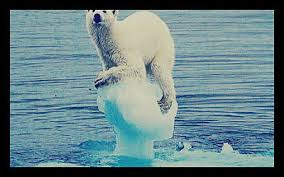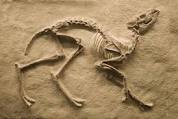/Blog/Carls-Blog/Perspectives/Seven-Interesting-Things-We-Learned-This-Week-About-the-Fight-Against-Greenhouse-Gases/?link=1&fldKeywords=&fldAuthor=&fldTopic=0

US President Donald Trump never misses an opportunity to take credit, even when he may not deserve it.
Until this week. Amazingly, some pretty positive news was reported – and news that Trump could legitimately "crow" about, BUT it looks like he's completely ignored it!
What? Why?
The answer? Because it has to do with climate change.
The news came in the form of a report by the International Energy Agency. That's the organization created in the early 1970's to monitor worldwide energy usage. The USA and 29 other countries are members. This past week (20 March 2018) the IEA published its first ever Global Energy and CO2 Status Report.
Of course, not all CO2 emissions are related to energy – think, for example, of agricultural and forestry - but based upon data from the Global Carbon Project, the IEA data cover about 88% of total carbon emissions worldwide.
As you might expect, it was a case of "good news/bad news". The overall "bad news" was that the level of carbon emissions related to energy usage went up worldwide last year about 1.4%, after several years of being pretty much flat.
So what was the good news? Four economically advanced countries – the USA, Great Britain, Japan, and Mexico – all had emissions reductions. The USA last year again led the world in total carbon emission reductions.
That's in spite of the fact that the USA withdrew from the Paris Climate Accord, and the evidence that the Trump Administration is trying to put "climate science deniers" in key positions in the Administration.
I rather doubt the International Energy Agency is putting out "fake news". But if it is, the people who should be shouting "fake news" are the people in most of the countries that have been complaining about Trump's environmental policies. That's because this report doesn't make them look very good.
So let's consider seven interesting conclusions one can draw from the IEA report.
#1: The USA continues to lead the world in reducing greenhouse gases, in spite of Trump's moves
That was an unmistakable conclusion of the report. For the third year in a row, the USA reduced total carbon emissions. Certainly good news!
So in spite of all of the moves by the Trump Administration to quash efforts to reduce greenhouse gases, it happened anyway.
So maybe we've been asking the wrong questions, or drawing the wrong conclusions. Maybe the real answer is, cleaning up greenhouse gases has more to do with economics and less to do with policymaking at the Federal government and international treaty level.
The fact that wind and solar are so much more cost competitive than in the past is leading to a huge transition across the USA. Market forces are very much in play.
A less well understood fact is how corporations are changing their thinking about greenhouse gases. An interesting example is Duke Energy, a major electric utility in the southeast USA. Duke for years has resisted the move towards clean energy. In fact, the company has been perceived almost as a climate change denier. Yet the company has recently released a climate change report to its shareholders and the public.
The company reports that it is now factoring in an implied cost of carbon in its long range planning. The fact that a company like Duke is now doing that clearly says, the world has changed! In the report, the company says, "Sustained financial support for research, development and scaling of low-carbon technologies, including smart grid, energy efficiency, solar, wind, storage, nuclear and carbon capture and sequestration, will be needed to meet these challenges."
A public relations ploy? Maybe, but notwithstanding Trump Administration efforts to deny climate change, something has clearly changed in the USA, and major corporations now realize it's in their economic self interest to deal with greenhouse gases. Less and less do they need outsiders lecturing to them about climate change. More and more, they can see the economics favor much less carbon.
These are likely the reasons the USA is at the leading edge of greenhouse gas reductions.
#2: The European Union is "talking the talk", but not exactly "walking the walk", when it comes to greenhouse gas reductions
Perhaps the most interesting "take away" from the report, however, is the poor performance of the European Union. Buried in the middle of the report are two important data points. First, the European Union overall increased greenhouse gas emissions last year by 1.5%. But besides the USA, one of the other major countries that reduced greenhouse gas emissions in 2017 was the United Kingdom – by a whopping 3.8%.
The UK is in the process of leaving the European Union, but is still part of it for reporting purposes. It represents 16% of the GDP of the EU, at least until the Brexit process is complete, presumably in March, 2019.
That means the European Union, excluding Great Britain, actually did worse than a worse 1.5% increase in emissions. Simple math tells us that if Britain represents 16% of the EU and had a 3.8% emissions decline, and the EU as a whole had a 1.5% increase, then the part of the EU excluding Britain actually had a 2017 emissions increase of at least 1.8%!
But that's not all. In another dimension, the European Union did very poorly. That's on the dimension of what's called "energy intensity", which is discussed more below. According to the IEA, worldwide, energy intensity improved by 1.7%. The report bemoaned that 1.7% reduction because it was actually 2.0% in 2016, the year before.
So why the worse performance in 2017? Well, also buried in the report was that the European Union only improved energy intensity by 0.5%, not even a third as good as the worldwide average. The European Union represents slightly less than 25% of the world economy – an even bigger percentage than the USA. Simple math tells us that that poor performance by the EU provides the reason worldwide performance went from 2.0% to 1.7% in 2017.
So if the Paris Climate Accord, as well as other governmental policies, are really the key to solving the greenhouse gas problem – a problem that definitely needs to be solved – then how do you explain the fact that the country with the "climate denying leadership" is way outperforming the very countries so invested in fixing the CO2 emissions problem?
Bottom line: maybe the European Union should spend less time criticizing USA performance on greenhouse gas emissions, figure out how the USA is getting the job done, and spend a lot more time fixing its own house!
#3: China's results are definitely going in the right direction
In the IEA report, China was also part of the "good news/bad news". The bad news was that China's overall emissions increased by 1.7% in 2017. Part of the good news, though, was that China reported overall economic growth of 7%, so its CO2 emissions increased at a far slower rate than did the economy.
The other good news out of China is that the government seems to want to do something about cleaning up the air – to give the Chinese blue skies again. There's now a major initiative to change heating in northern China away from coal and towards more environmentally friendly technology. Not only that, China is now leading the world in installations of alternative energy such as wind and solar. Certainly good news!
#4: Renewables are making great headway
The truly good news continues to be on the renewables front. According to the IEA report, "Renewables saw the highest rate of growth of any energy source in 2017 and met around a quarter of global energy demand growth last year. The power sector played the most important role in the growth of low-carbon energy, with renewables-based electricity generation increasing by 6.3% (380 TWh) in 2017. Renewables now account for 25% of global electricity generation. China and the United States together accounted for half of the increase in renewables-based electricity generation, followed by the European Union (8%), Japan and India (with 6% of growth each). The growth of wind power and solar PV in 2017 was unprecedented; wind power accounted for the largest share of overall renewables growth, at 36%, followed by solar PV (27%), hydropower (22%) and bioenergy (12%). China accounted for 40% of the combined growth in wind and solar PV, with new record capacity additions and a reduction in the rate of curtailment. Nearly 40% of the increase in hydropower was in the United States, while climatic conditions in the European Union reduced hydro output by nearly one-tenth. The European Union, China and Japan accounted for 82% of global bioenergy growth in power."
#5: The focus needs to be on Asia, especially countries besides China
So there's positive news coming from China, but the news elsewhere in Asia doesn't seem so good. That's particularly problematic because energy usage, and greenhouse gases, are growing most rapidly in Asia. India, in particular, is both expanding its economy rapidly, but is also emitting more greenhouse gases. Countries such as Indonesia and South Korea are also contributing to the problem.
If we're going to avoid hitting the "two degrees Celsius" increase in average global temperatures, the battle will likely be won or lost in places like Asia. More attention needs to be placed on controlling emissions in these areas.
#6: Energy intensity continues to improve, it just needs to happen more quickly
"Energy intensity" refers to the amount of energy required to produce a unit of economic output – GDP. Again, a "good news/bad news" situation. On a positive note, worldwide economic output has increased by about 80% since 2000. However, energy usage has only increased by about 40% - so we're getting more efficient. We improved again last year – 1.7%
But if we're going to achieve the "2 degrees Celsius" goal, we've got to increase energy intensity even more, otherwise we've got to find use more renewables.
Which means the European Union has got to "pick up its game" and improve energy intensity more than 0.5% a year. Other major economic powers – the USA and China – need to keep pushing to improve, too.
#7: Like other countries, the USA needs to intensify its efforts, just maybe in different ways than everyone's been saying
The USA results for 2017 are good, but they could still be better. Moreover, if we're going to achieve the "two degree Celsius" goal, we're going to have to step up our game in the USA, too.
The USA reduced greenhouse gases again in 2017 for two key reasons: 1) growth in renewable energy; and 2) reduction in electricity demand. To continue to reduce greenhouse gases, focus should likely remain on these two areas.
The economics of renewables in the USA continue to get better. In many cases, renewables are more cost competitive than oil, gas and coal. The proportion of renewables in place will likely continue to grow. On the other hand, reducing electric demand may be much more challenging. That's likely because the size of the electric vehicle fleet is going to continue to grow. Not only that, but electric generation to support server farms for cloud data storage will likely continue to grow rapidly. Perhaps the best way to reduce electricity demand is to increase the usage of LED's.
Conclusion
So, what then can we take away from this IEA report on CO2 emissions?
Well, we can pretty safely say President Trump isn't going to take credit for the comparatively positive USA results on climate change for 2017.
What we don't know is the response of the leaders of countries who do believe in the danger of CO2, yet whose results were pretty lousy. My recommendation is, stop and ask:
- What are the USA, Great Britain, Japan and Mexico doing that's having a positive impact?
- What does the European Union need to do differently that will produce better results this year, next year, and the year after that?
- What do countries like India need to do in order to get results more like those in China?
There are other questions to ask, too, but these are some good starters.
The clock continues to tick on greenhouse gas emissions. Time for fewer platitudes and more practical action.
\






